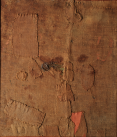Abstract
In this article I try to show how two different types of interpreting Horace's Ars poetica, which coexisted in French, German, and Italian Schools of the eleventh and twelfth century to the fifteenth century, differ in aims and character. One tradition, here represented by the Excerpta Monacensia, continues the Carolingian efforts to explain through excerpts from Pomponius Porphyrio (third century CE) and the Pseudacronean corpus of glosses (ninth century) the historical and literary background of Ars poetica. The other tradition, represented by a set of free-standing, lemmatic commentaries on Epodes, Carm., A.P. and Epist. by the Anon. Parisinus, emphasizes authorial intent, character delineation, and stylistic requirements of the different subject matter as the core subject matter of the Ars poetica. It upgrades Horace's lyrics 'from his youth' as pivotal for understanding the total oeuvre and his relationship to Maecenas and Augustus from his youth all the way to his 'maturest' work, the Epistles. The Ars poetica is interpreted both grammatically indicating figures and tropes, and rhetorically as a practical manual for teaching how to write good poetry and how to avoid errors of composition and style. Two appendices with short textual editions of passages discussed conclude the article.
Except where otherwise noted, the content of this site is licensed under a Creative Commons Attribution-ShareAlike 4.0 International (CC BY-SA 4.0).
Authors retain copyright of their work. The CC BY-SA 4.0 licence allows readers to copy and redistribute the material in any medium or format, and to remix, transform, and build upon the material for any purpose, even commercially, as long as the original author is credited and as long as any works that are derived from the original are distributed under the same terms.

